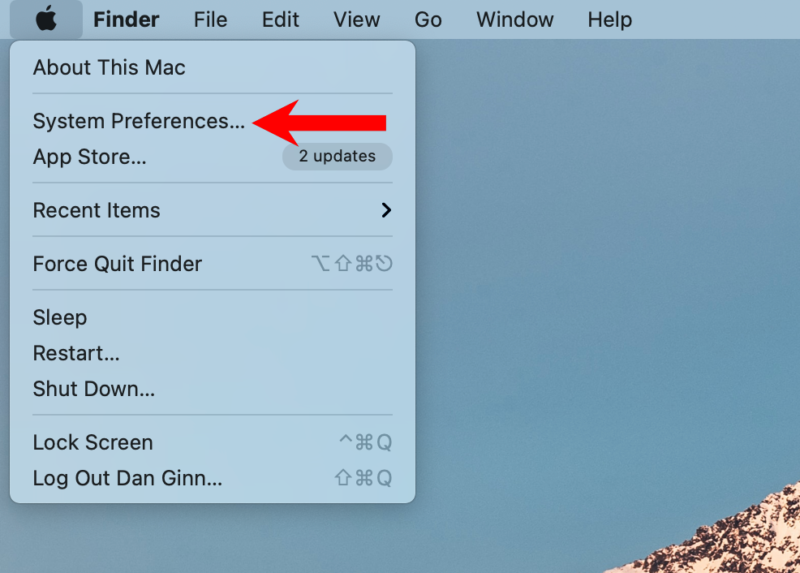How to Backup a Mac to an External Hard Drive in 2025
Backing up your Mac on a regular basis is one of the best things you can do. Through the use of Time Machine and an external hard drive, we’re going to break down the full process to help you keep your files safe.
Millions of people flock to buy a Mac because of its beautiful design and superb operating system. However, more important than the laptop itself are the contents that exist on it. Should damage or malfunction arise, it’s important to know how to backup a Mac to an external hard drive to ensure you can keep all your files.
Key Takeaways:
- Backing up your Mac ensures you don’t lose your files.
- iDrive, Backblaze and Carbonite are great cloud options for backing up your Mac.
- Restoring your Mac files and data is a simple and relatively quick process.
Thankfully, Apple is aware of how important personal files are to its customers. Because of this, the tech giant ships its computers with tools specifically designed to help you backup all your content.
Time Machine is a built-in application for macOS that allows you to backup files such as documents, photos, and apps. To use Time Machine, you’ll need to attach an external hard drive to your Mac (check out our list of the best external hard drives).
From here, we’ll show you everything you need to do to create and save a backup of all your files, starting with tips on what you should do before you begin your backup.
10,000+ Trust Our Free Cloud Storage Tips. Join Today!
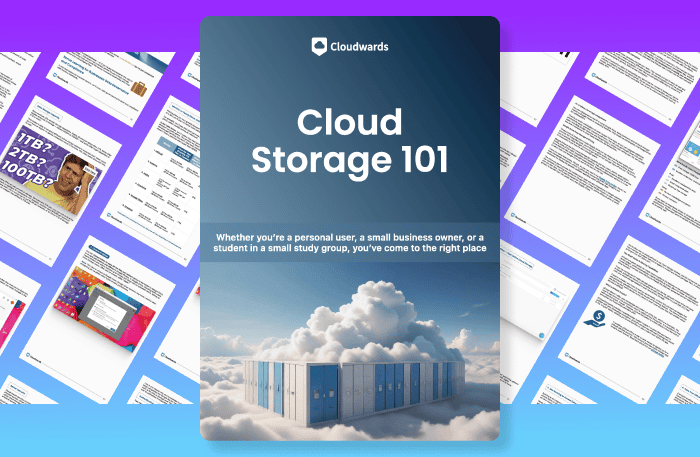
- Demystify cloud storage terminology and key concepts in plain language
- Discover easy-to-implement techniques to securely backup and sync your data across devices
- Learn money-saving strategies to optimize your cloud storage costs and usage
-
07/20/2021
Cloudwards updated this article to include the Time Machine recovery process, how to back up without an external drive, and how to remove junk files.
How to Backup Mac to External Hard Drive
Backing up all your content on macOS is relatively simple, and because Time Machine comes preinstalled, getting started takes no time at all. It’s also free to use, whereas alternative options usually come at a cost.
It does lack some features. For example, while you can authorize Time Machine to do automatic backups, there’s no way to program how often those backups take place. Instead, Time Machine can make hourly backups for the past 24 hours, daily backups for the past month, or weekly backups for all previous months.
There’s also no option for drive cloning. This means you are unable to duplicate your hard drive and easily use it to boot up your system and all its contents, without going through the full process of restoring your files.
The lack of those extra features doesn’t make Apple’s own backup solution a bad option. For most users, it offers what they need to backup their Mac. With that said, let’s get into our step-by-step guide on backing up your Mac to an external drive with Time Machine.
Step by Step: Backing up Your Mac to an External Hard Drive With Time Machine
- Select Time Machine
After opening system preferences, you will notice a range of options available.“Time Machine” is located in the bottom row. When you select it, you will move to the next window.
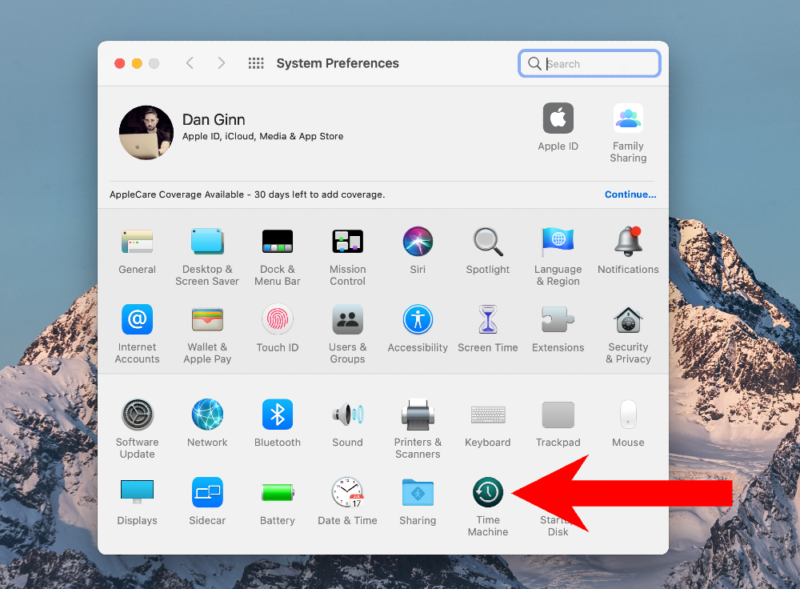
- Select Backup Disk
Now that you’re in the Time Machine window, you need to tap “select backup disk.” Here you’ll choose where you want to backup your Mac. Select your external hard drive and press “use disk.”
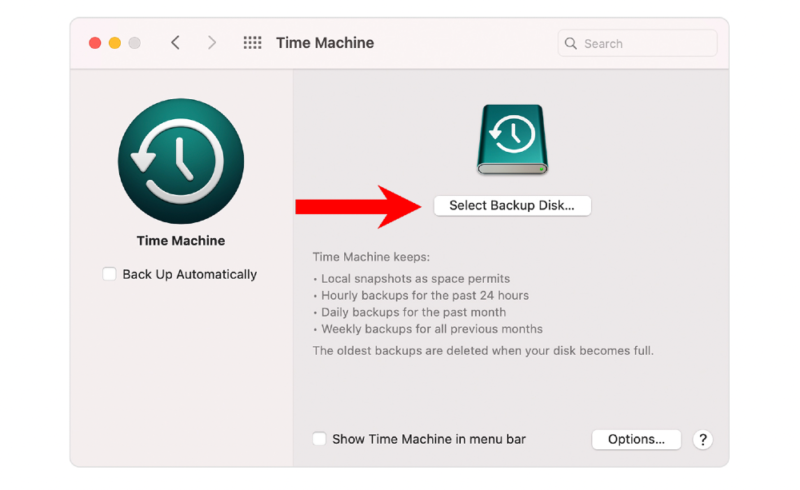
- Select Your Hard Drive and Encrypt Backup
Next, tap “select disk” and select your hard drive again. You will see the option to “encrypt backups.” We recommend selecting this option as it adds further security for your files and keeps them safe from unwanted third parties gaining access to them.
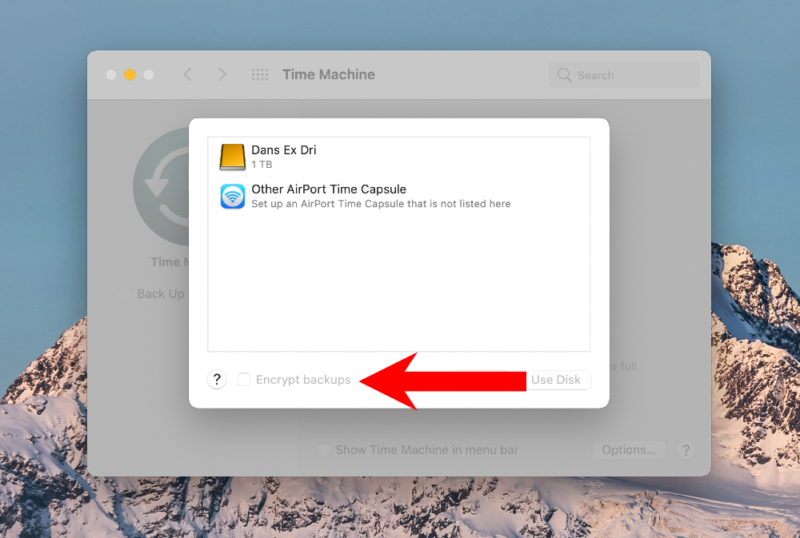
- Create a Password for Your Backup
If you opted to encrypt your backup, you will be asked to create a password. Don’t forget your password, as without it you won’t be able to access your backups. Tap “encrypt disk” and you’re ready to move on to the next step.
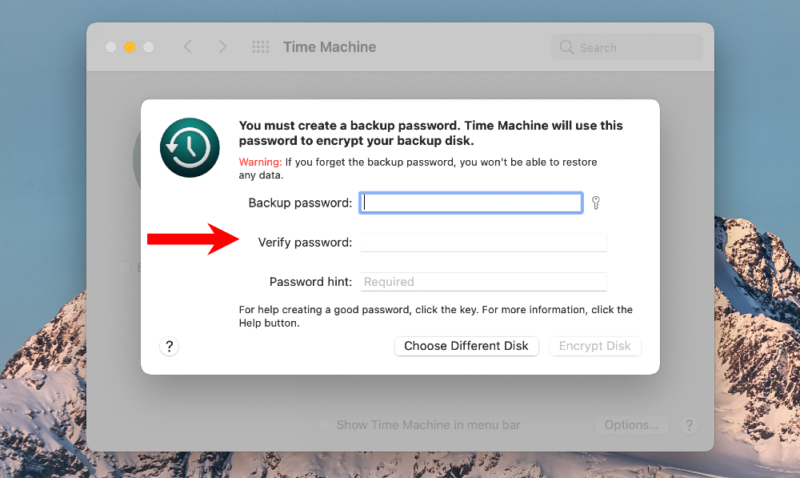
- Wait for Backup to Begin
After encrypting your disk, you will return to the main window inside Time Machine. On the right-hand side of the window, you will see that “backup automatically” is checked and Time Machine is preparing your backup.
At this point you don’t need to do anything. Time Machine will automatically backup your Mac and notify you how much time it will take to complete. You will receive a notification in the top right-hand corner of your desktop when your backup has finished.
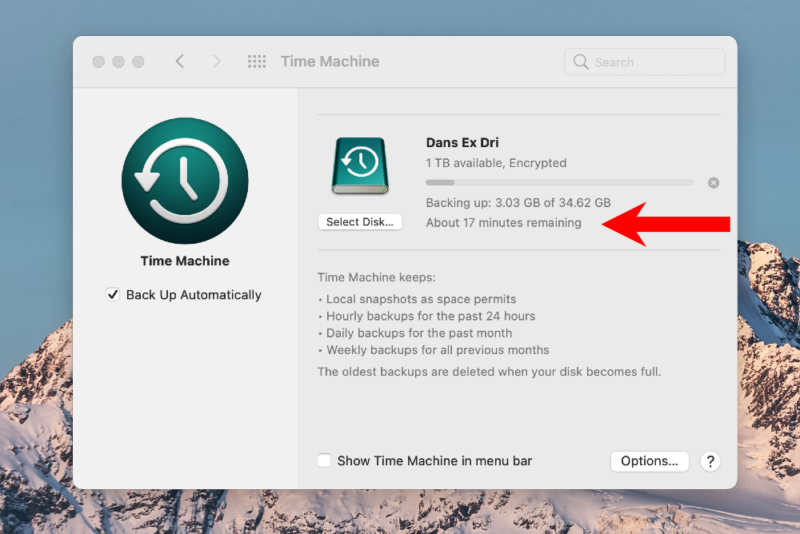
Alternatives to Time Machine for Backing up Mac
Although Time Machine is the default option for backing up your Mac, it doesn’t mean it’s the best. There are several alternatives out there that offer different features than Time Machine that some users may find attractive.
iDrive is one of the more popular backup solutions (read our iDrive review or check out the website here). In addition to allowing you to backup your Mac to an external drive, you can also back it up to the cloud (see how it’s different in our cloud storage vs external hard drive guide). Having a hybrid backup option is one of the reasons we ranked iDrive as one of the best cloud storage services.
To keep things in-house, you can also backup your Mac through the disk utility app. Rather than do a standard backup, disk utility creates a disk image of your drive, which you can then transfer as a file to a different computer or use as backup for your current one. However, there are no automated backups with disk utility, and many users believe it’s not as reliable as Time Machine.
How to Backup Mac Without an External Hard Drive
If you’d rather not pay the up-front cost of an external hard drive, or don’t like the idea of carrying it around, there are alternative ways to backup your Mac.
The first option is to backup your Mac to iCloud (read our iCloud review here). Be mindful, though, that you’ll most likely have to pay for extra iCloud storage, as the free 5GB given to users isn’t going to be enough.
For moderate users, 200GB ($2.99 per month) may be sufficient. Heavy users, like video editors and photographers, will likely need up to 2TB of storage ($9.99 per month) to have adequate storage space.
How to Backup Mac with iCloud
Backing up the contents of your Mac is simple. Open up “finder,” and on the left-hand side of the window you will see “iCloud.” You can easily drag folders, including apps, into the iCloud tab and they will automatically sync to your account.
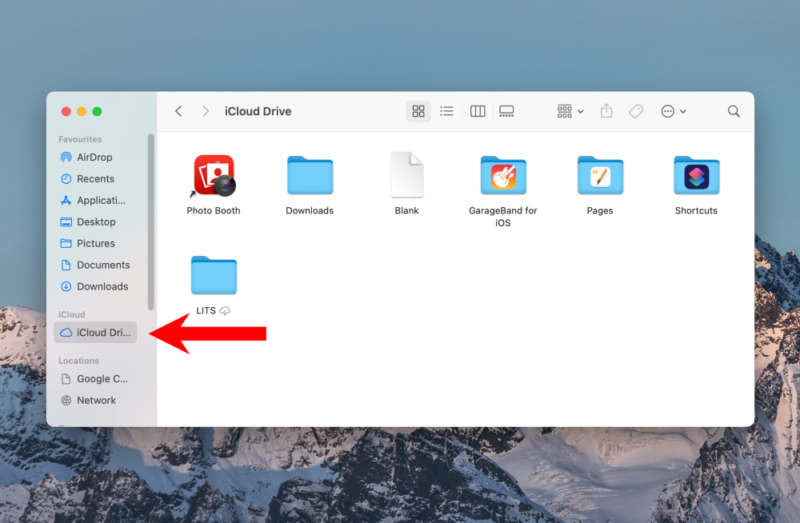
Be aware that, unlike Time Machine, you can’t do hourly updates of the files you have backed up, so if you make changes to your files, you will need to manually send them to iCloud. This is where third-party cloud options come into play.
Alternatives to iCloud
Although iCloud is the in-house solution, it’s not one of the best cloud backup options for your Mac. Services like Backblaze (read our Backblaze review or check out Backblaze’s website here) offer automatic backups, unlimited storage space and best-in-class encryption to ensure your files remain private and secure.
Carbonite (read our Carbonite review or check out Carbonite’s website here) is another fantastic option, especially when it comes to restoring your Mac. The service offers a more detailed, step-by-step approach when you restore all your files and data. It’s extremely well priced too, offering unlimited storage for just $6 per month.
Before You Backup Your Mac to an External Hard Drive
Before you backup your Mac to an external hard drive, here are three quick suggestions before you backup:
- Get rid of junk files
- Check available storage on Mac
- Make sure your hard drive is properly formatted
Tip 1: Get Rid of Junk Files
There’s likely a lot of junk files on your Mac that you didn’t know existed. These files quickly add up in size and take up unnecessary storage space. Before backing up your Mac, it’s a good idea to remove as many junk files as possible. It will save both time and space when doing manual or automatic backups, as well as when you restore your Mac files.
There are several ways to remove unwanted files. You can delete them manually, or use third-party software that helps you remove all the unnecessary clutter.
- Locate Files in “About This Mac”
To do it manually, go to the Apple menu, select “about this Mac,” tap “storage” and then click “manage.”
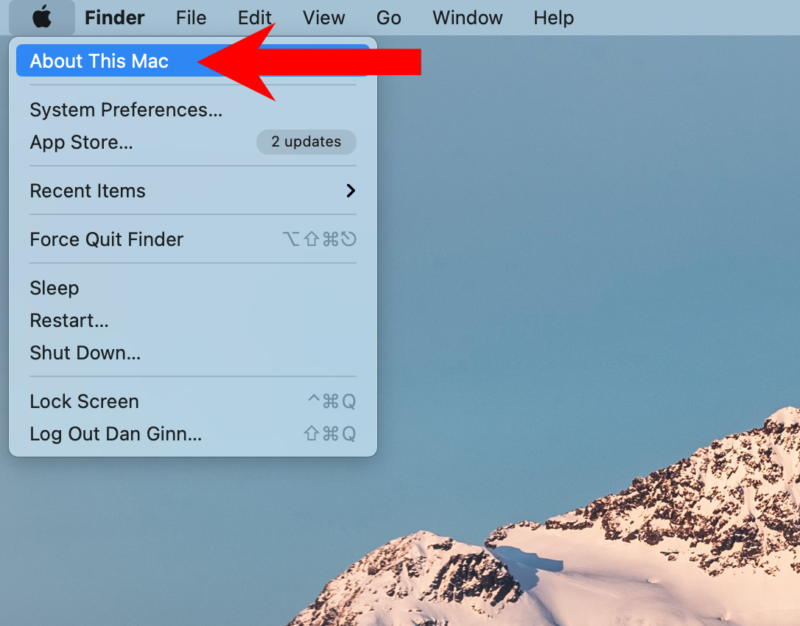
- Identify the Categories with Unnecessary Files
On the left-hand side of the storage window, your files are broken down into different categories, including documents, music, photos, messages and mail. You have to go through each category individually and identify which files you no longer need. Sure, this is time-consuming, but it gives you control over what files you keep on your Mac and what files you delete.
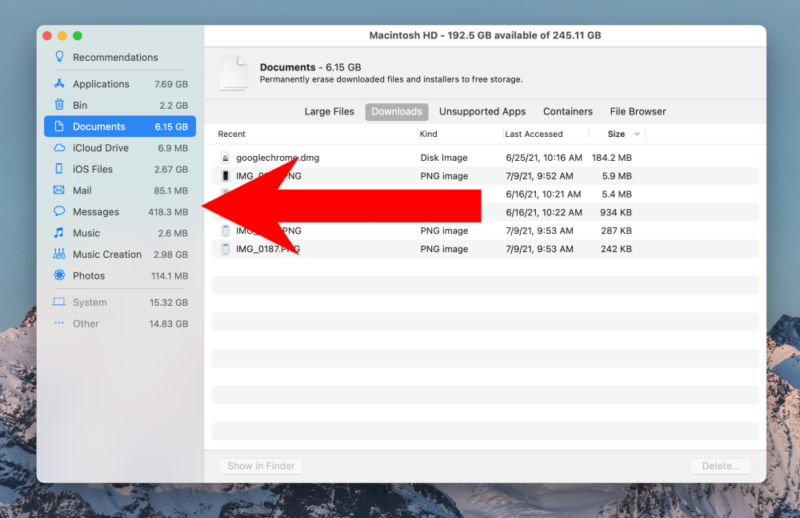
- Use Apple’s Recommendations
Apple helps users manage their storage by offering smart recommendations for where they can clean up their clutter. Here you can see your files broken down into separate sections such as “large files,” “downloads” and “unsupported apps.” Anything you see that you don’t need, you can delete.
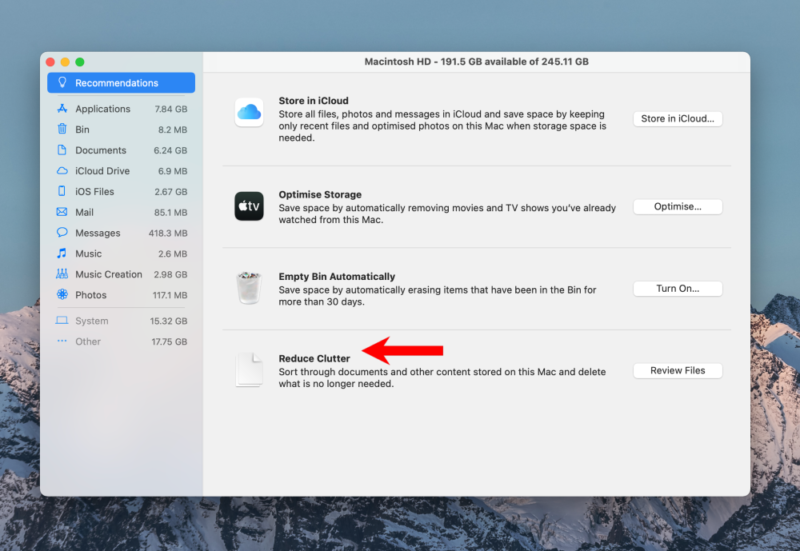
If you don’t want to spend hours cleaning up your Mac, we recommend using CleanMyMac. The tool gets to many of the files you can’t see such as cache files, language files and system log files. The software identifies which files are not used and recommends removing them. Not only does this free up storage space, it can also improve the overall performance of your Mac.
Tip 2: Check Available Storage on Mac
Checking how much available storage you have on your Mac is simple. Again, go to the Apple menu, select “about this Mac” and tap “storage.” Here you will see how much storage you have used, and how much storage you have available.
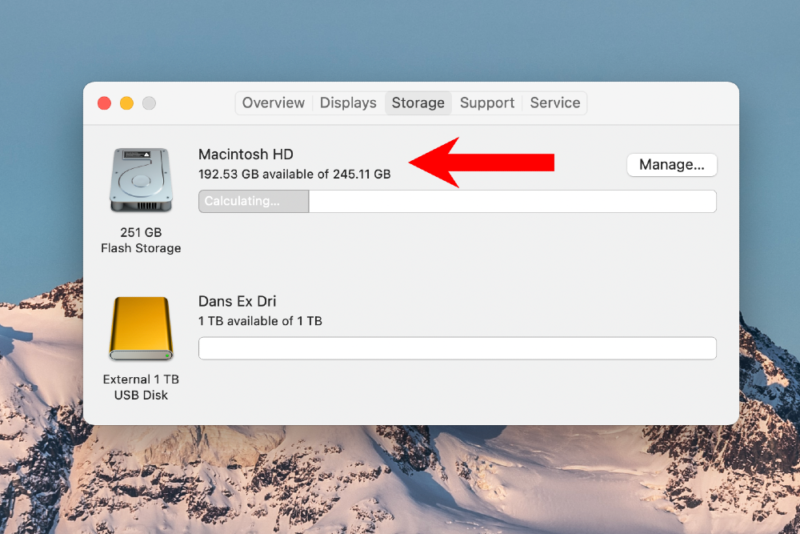
Tip 3: Make Sure Your Hard Drive Is Properly Formatted
If you’re using an external hard drive that was previously formatted for a Windows PC or you’re using it for the first time, you will need to format it to be compatible with macOS. Be aware that reformatting an external drive often means deleting all of its content — if you still have files you don’t want to lose, you will need to backup your hard drive to another computer.
To begin formatting, ensure your external drive is connected to your Mac. Apple recommends connecting your hard drive directly to your Mac with a USB, Thunderbolt or FireWire port connection, rather than using an adapter (USB to Thunderbolt, for example). However, when backing up our Mac, we used a USB adapter and experienced no issues at any point throughout the process.
- Locate Disk Utility in Launchpad
Once you’re connected, select “launchpad,” find the “other” folder and select “disk utility.”
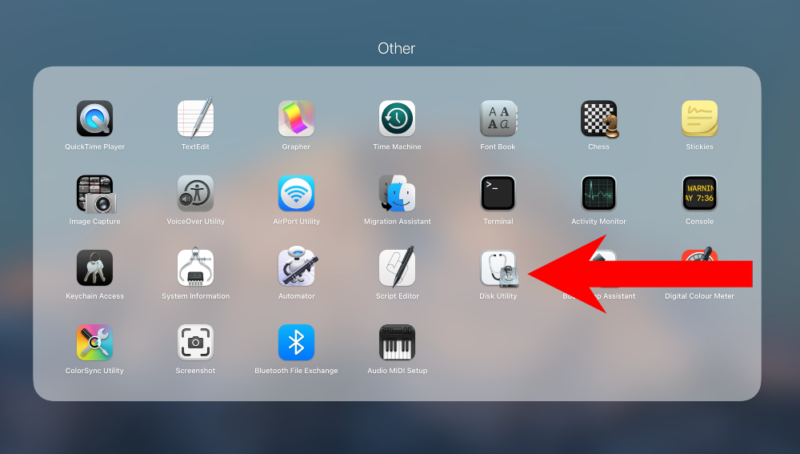
- Select Your Hard Drive and Erase
On the right hand side, under “external,” you’ll be able to see your hard drive. Select it, and then tap “erase” at the top of the screen.
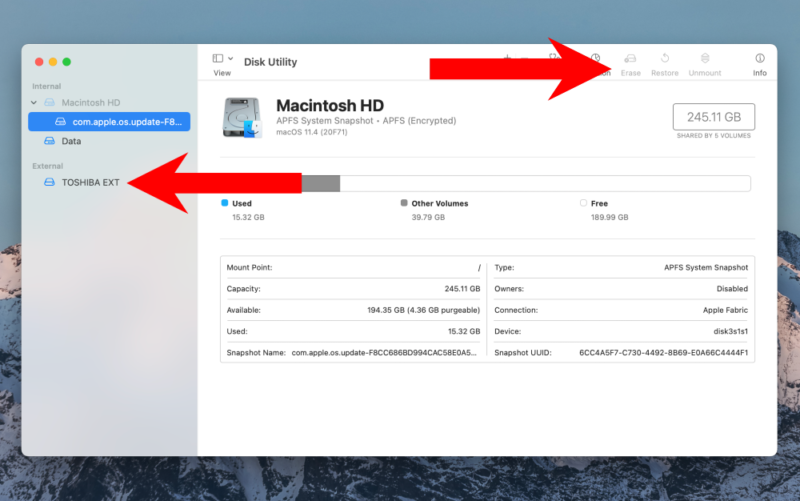
- Choose Format
When formatting your hard drive, you’ll notice several formatting options, including Mac OS Extended journaled, MS-DOS (FAT32) and exFAT. We recommend selecting exFAT, as it can backup files of any size, whereas FAT32 is limited to files of up to 4GB. Now you’re fully formatted and ready to go.
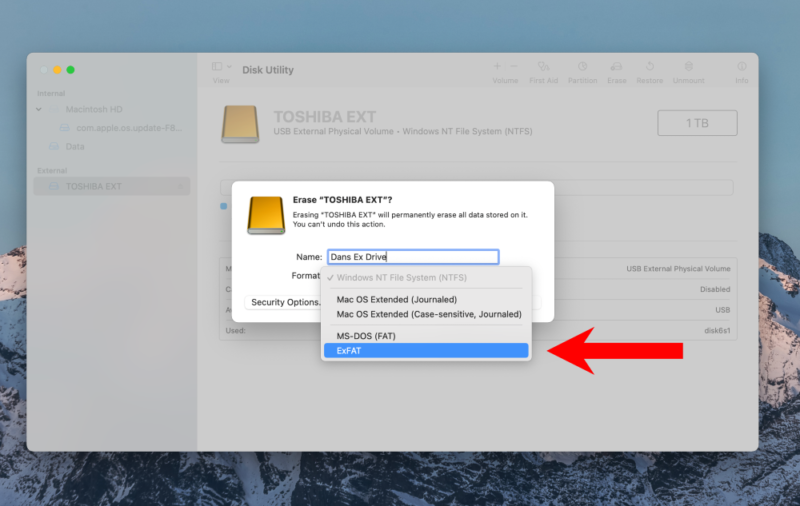
Now that you’ve prepared for the backup process, let’s show you how to backup Macs to external hard drives.
Restoring Your Mac With a Time Machine Backup
If you have purchased a new Mac or needed to reinstall macOS on your current computer, you’ll need to restore your files from a Time Machine backup. There’s a handful of steps you’ll need to go through to do this.
- Open Migration Assistant
Select “launchpad,” locate the “other” folder and then select “migration assistant.” You’ll need to enter your system password to begin the process of restoring your backup.
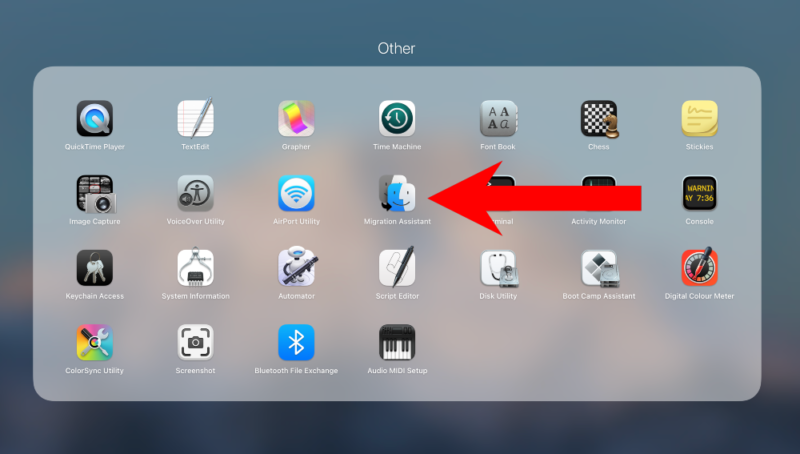
- Select How You Want to Transfer Your Information
On the next screen you will be presented with three options for how you wish to transfer your information; select “from a Mac, Time Machine or startup disk.” You will receive a prompt to plug in your power adapter. It’s a good idea to do this, as restoring your Mac may take several hours, depending on the size of your backup.
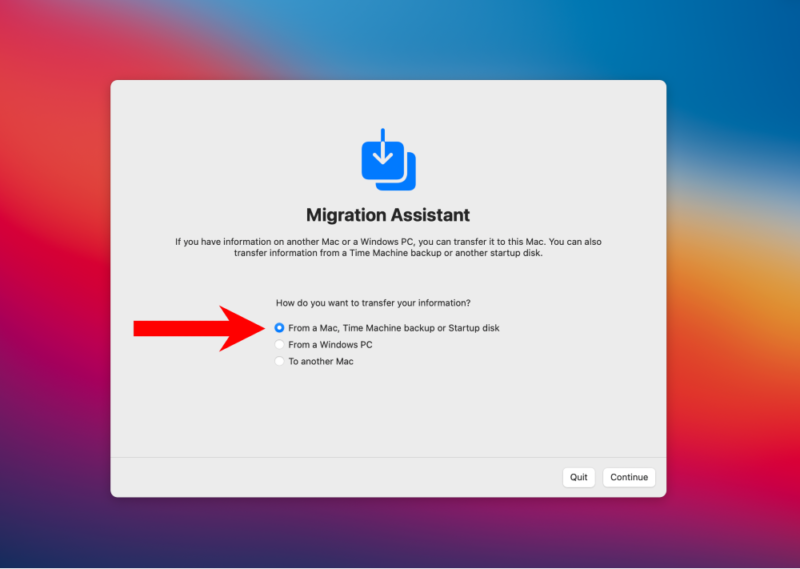
- Select Your External Hard Drive
Next, you will see your external hard drive at the top of the window. Select it and press “continue.”
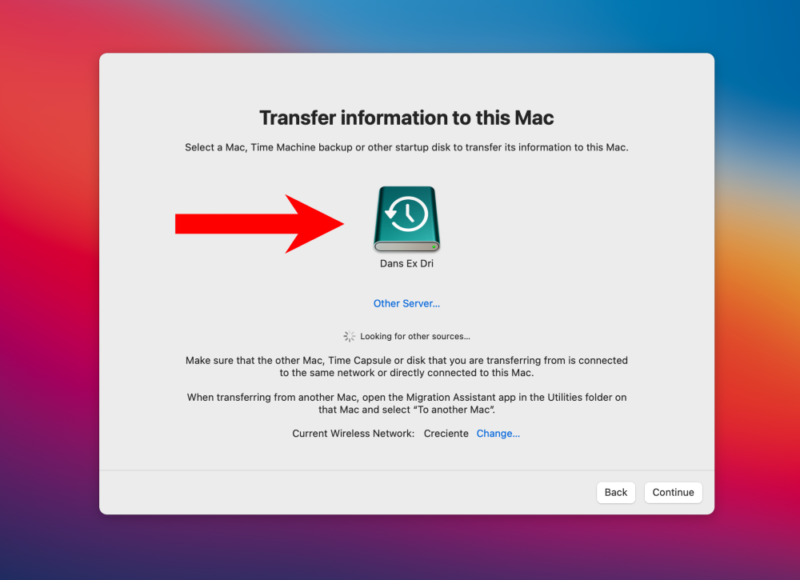
- Select Which Time Machine Backup You Want to Restore
If you have made several backups, choose which one you want to restore and press “continue.”
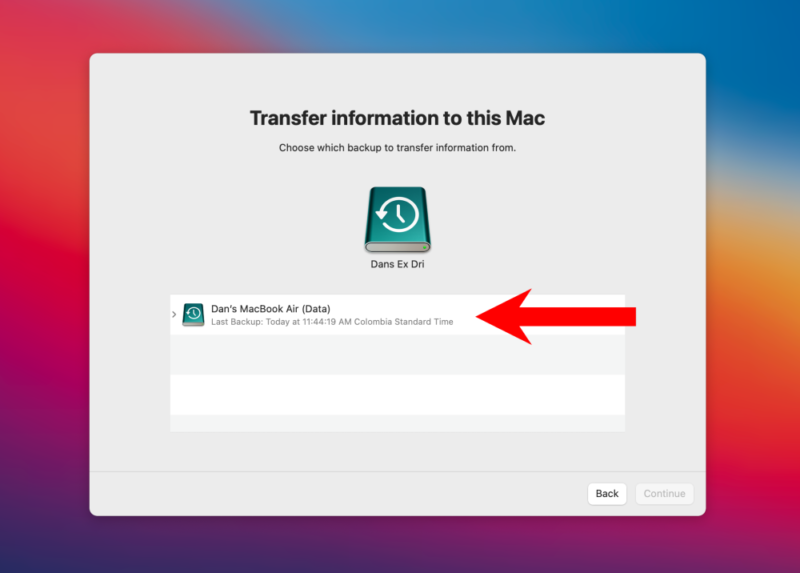
- Select What Information You Want to Restore
Now you will be asked which information you want to restore from your backup. Here, you can choose all of the files, or just the files you prefer. Once you have identified which files you wish to restore, tap “continue.” Your Mac will begin to restore the Time Machine backup you selected.
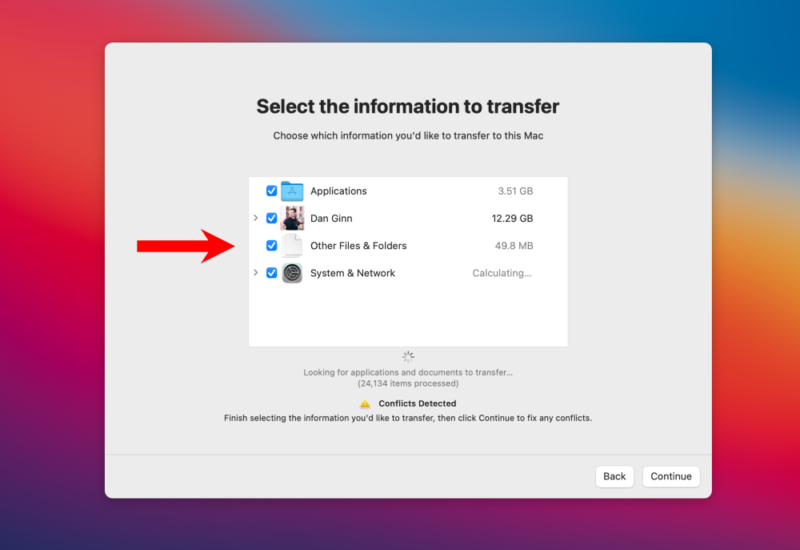
Final Thoughts: Backup Mac Options
Backing up your files is one of the best decisions you can make as a Mac owner. For many of you, knowing your files are backed up gives you the peace of mind that you can recover them should you experience any issues with your computer in the future. So if you’re thinking about whether you should backup your Mac, the answer is yes, you should.
We hope that you find this guide useful. For related guides, check out our comprehensive guides on how to backup photos on Mac and how to backup iPhone to an external hard drive.
Do you have any questions about backing up your Apple computer? Is there anything we didn’t cover that you wish we did? Do you know of a better alternative? Let us know in the comments below. Thanks for reading.
FAQ
The size of the external hard drive you need all depends on how much information you need to backup. Time Machine informs you of the total size of your backup. Light users may be fine with a 240GB hard drive, whereas heavy users may need something closer to 1TB.
The amount of time it takes to backup your Mac depends on how many files you have. Time Machine will notify you of the estimated time it will take to complete a backup when the backup is in process.
In the Time Machine window, select “options.” Tap the “+” sign, and from here you can choose which files you wish to exclude from the backup.



